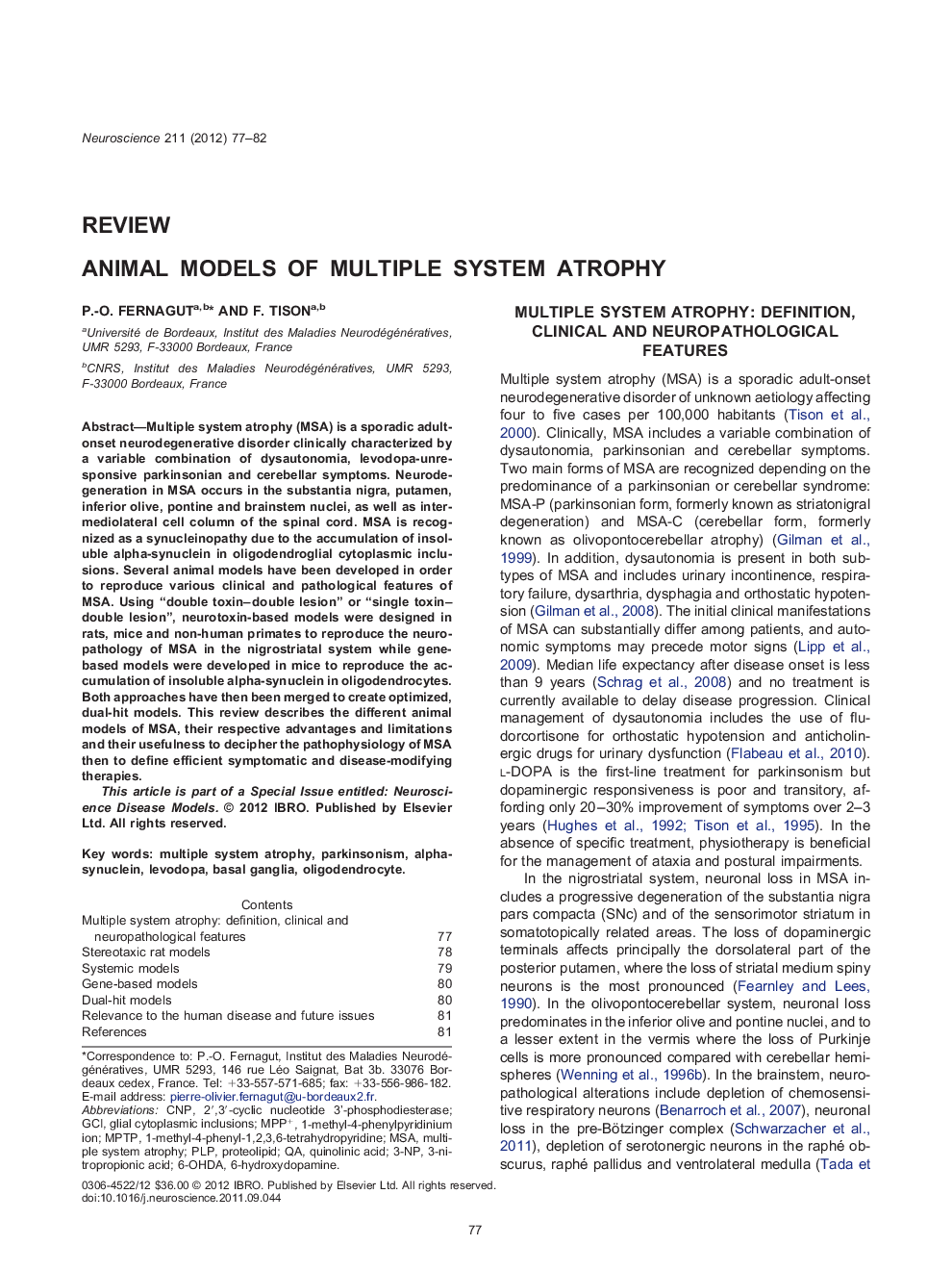| کد مقاله | کد نشریه | سال انتشار | مقاله انگلیسی | نسخه تمام متن |
|---|---|---|---|---|
| 4338417 | 1614865 | 2012 | 6 صفحه PDF | دانلود رایگان |

Multiple system atrophy (MSA) is a sporadic adult-onset neurodegenerative disorder clinically characterized by a variable combination of dysautonomia, levodopa-unresponsive parkinsonian and cerebellar symptoms. Neurodegeneration in MSA occurs in the substantia nigra, putamen, inferior olive, pontine and brainstem nuclei, as well as intermediolateral cell column of the spinal cord. MSA is recognized as a synucleinopathy due to the accumulation of insoluble alpha-synuclein in oligodendroglial cytoplasmic inclusions. Several animal models have been developed in order to reproduce various clinical and pathological features of MSA. Using “double toxin–double lesion” or “single toxin–double lesion”, neurotoxin-based models were designed in rats, mice and non-human primates to reproduce the neuropathology of MSA in the nigrostriatal system while gene-based models were developed in mice to reproduce the accumulation of insoluble alpha-synuclein in oligodendrocytes. Both approaches have then been merged to create optimized, dual-hit models. This review describes the different animal models of MSA, their respective advantages and limitations and their usefulness to decipher the pathophysiology of MSA then to define efficient symptomatic and disease-modifying therapies.This article is part of a Special Issue entitled: Neuroscience Disease Models.
▶Overview of stereotaxic rat models of Multiple System Atrophy. ▶Overview of systemic models of Multiple System Atrophy. ▶Overview of gene-based models of Multiple System Atrophy.
Journal: Neuroscience - Volume 211, 1 June 2012, Pages 77–82